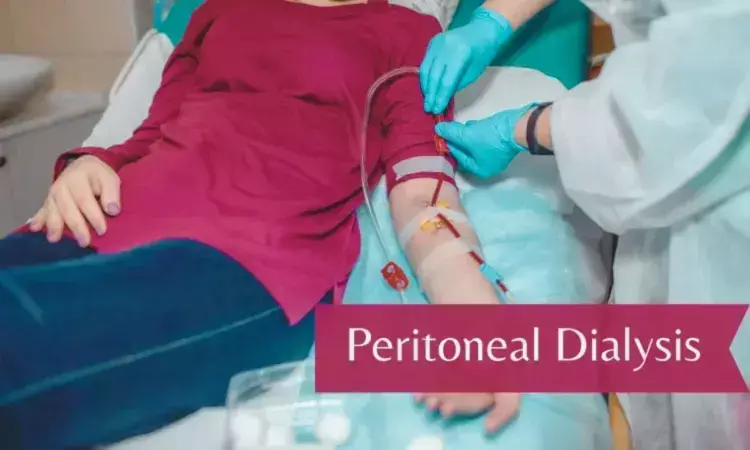- Home
- Medical news & Guidelines
- Anesthesiology
- Cardiology and CTVS
- Critical Care
- Dentistry
- Dermatology
- Diabetes and Endocrinology
- ENT
- Gastroenterology
- Medicine
- Nephrology
- Neurology
- Obstretics-Gynaecology
- Oncology
- Ophthalmology
- Orthopaedics
- Pediatrics-Neonatology
- Psychiatry
- Pulmonology
- Radiology
- Surgery
- Urology
- Laboratory Medicine
- Diet
- Nursing
- Paramedical
- Physiotherapy
- Health news
- Fact Check
- Bone Health Fact Check
- Brain Health Fact Check
- Cancer Related Fact Check
- Child Care Fact Check
- Dental and oral health fact check
- Diabetes and metabolic health fact check
- Diet and Nutrition Fact Check
- Eye and ENT Care Fact Check
- Fitness fact check
- Gut health fact check
- Heart health fact check
- Kidney health fact check
- Medical education fact check
- Men's health fact check
- Respiratory fact check
- Skin and hair care fact check
- Vaccine and Immunization fact check
- Women's health fact check
- AYUSH
- State News
- Andaman and Nicobar Islands
- Andhra Pradesh
- Arunachal Pradesh
- Assam
- Bihar
- Chandigarh
- Chattisgarh
- Dadra and Nagar Haveli
- Daman and Diu
- Delhi
- Goa
- Gujarat
- Haryana
- Himachal Pradesh
- Jammu & Kashmir
- Jharkhand
- Karnataka
- Kerala
- Ladakh
- Lakshadweep
- Madhya Pradesh
- Maharashtra
- Manipur
- Meghalaya
- Mizoram
- Nagaland
- Odisha
- Puducherry
- Punjab
- Rajasthan
- Sikkim
- Tamil Nadu
- Telangana
- Tripura
- Uttar Pradesh
- Uttrakhand
- West Bengal
- Medical Education
- Industry
Validated nomogram may Predict upper GI bleeding in peritoneal dialysis Patients: Study

Researchers have found in a new study that Calcium and PPI use, history of upper gastrointestinal bleeding (UGIB), hemoglobin levels, and uric acid were identified as significant predictors of UGIB in peritoneal dialysis (PD) patients. Therefore a validated nomogram based on these factors shows promise as a clinical tool for predicting UGIB risk in this population. The study was published in BMC Nephrology by Sijia S. and colleagues.
This retrospective study involved information from 2,107 PD patients who were treated from February 1, 2007, to November 15, 2021. The patients were split into training and validation groups randomly in a 1:1 ratio. Researchers used the least absolute shrinkage and selection operator (LASSO) regression method to determine candidate UGIB predictors. The predictors were then utilized to create a nomogram model.
To test the performance of the nomogram, the accuracy and clinical value of the model were both checked with a variety of metrics, ranging from receiver operating characteristic (ROC) curves and calibration curves to decision curve analysis (DCA). This strict testing guaranteed that the model was not only statistically valid but also useful in practice.
Key Findings
• Of the 2,107 patients examined, 114 had UGIB. Five predictors were found to be predictive of UGIB and were included in the nomogram:
• Calcium supplement use
• Proton pump inhibitor (PPI) use
• History of UGIB
• Hemoglobin
• Uric acid
• The nomogram had excellent predictive performance.
• The C-index, a measure of model discrimination, was 0.859 (95% CI: 0.810–0.909) in the training set and 0.874 (95% CI: 0.829–0.919) in the validation set.
• These results reflect high accuracy in separating patients at risk for UGIB.
The analysis conclusively demonstrated that the application of calcium and PPIs, history of UGIB, hemoglobin level, and uric acid were the key predictors of UGIB in peritoneal dialysis patients. The reliable nomogram derived from these factors provides a convenient method of estimating the risk of UGIB. It has the potential to be used as a clinical decision-support tool to enhance patient care and outcomes in this high-risk group.
Reference:
Shang, S., Zhang, X., Zhan, X. et al. Development and validation of a predictive model for upper gastrointestinal bleeding in peritoneal dialysis patients: a retrospective, multicenter cohort study. BMC Nephrol 26, 383 (2025). https://doi.org/10.1186/s12882-025-04304-y
Dr Riya Dave has completed dentistry from Gujarat University in 2022. She is a dentist and accomplished medical and scientific writer known for her commitment to bridging the gap between clinical expertise and accessible healthcare information. She has been actively involved in writing blogs related to health and wellness.
Dr Kamal Kant Kohli-MBBS, DTCD- a chest specialist with more than 30 years of practice and a flair for writing clinical articles, Dr Kamal Kant Kohli joined Medical Dialogues as a Chief Editor of Medical News. Besides writing articles, as an editor, he proofreads and verifies all the medical content published on Medical Dialogues including those coming from journals, studies,medical conferences,guidelines etc. Email: drkohli@medicaldialogues.in. Contact no. 011-43720751


